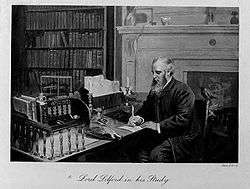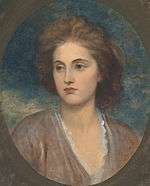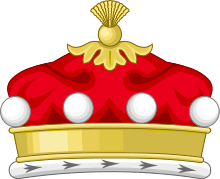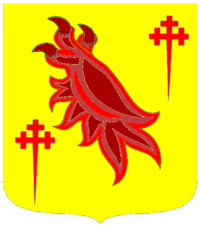Thomas Powys, 4th Baron Lilford
Thomas Littleton Powys, 4th Baron Lilford (18 March 1833 – 17 June 1896), was a British aristocrat and ornithologist.
The Lord Lilford | |
|---|---|
 Thomas Powys, 4th Baron Lilford in his study at Lilford Hall | |
| Born | 18 March 1833 |
| Died | 17 June 1896 (aged 63) Lilford Hall |
| Nationality | British |
| Other names | Thomas Powys, 4th Baron Lilford |
| Occupation | Aristocrat and ornithologist |
| Known for | 4th Baron Lilford |
Life
Lilford was the eldest son of Thomas Powys, 3rd Baron Lilford, and Hon. Mary Elizabeth Fox, daughter of Henry Vassall-Fox, 3rd Baron Holland. He was born in Stanhope Street, Mayfair, London, on 18 March 1833. [1]
He succeeded his father as fourth Baron in 1861.[2] Lilford was one of the eight founders of the British Ornithologists' Union in 1858 and its President from 1867 until his death. He was also the first President of the Northamptonshire Natural History Society.
Lilford travelled widely, especially around the Mediterranean and his extensive collection of birds was maintained in the grounds of Lilford Hall, his second residence was Bank Hall in Bretherton, Lancashire, which he inherited from his father (3rd Baron Lilford), who inherited it from George Anthony Legh Keck.[3] He inherited the Holland Estates from his mother's family. Until 1891, his aviaries featured birds from around the globe, including rheas, kiwis, Pink-headed ducks and a pair of free-flying Bearded vultures. He was responsible for the introduction of the Little owl into England in the 1880s.
He wrote about birds including Notes on the Birds of Northamptonshire and Neighbourhood (1895) and Coloured Figures of the Birds of the British Islands, which was completed by Osbert Salvin after his death.[1]
A species of European lizard, Podarcis lilfordi, is named in his honor.[4]
Family

Lord Lilford married, firstly, Emma Elizabeth Brandling, daughter of Robert William Brandling, in 1859. After her death in 1884 he married, Clementina, daughter of Ker Baillie-Hamilton, in 1885. [1]
He died in June 1896, aged 63, and was succeeded in the barony by his eldest son from his first marriage, John. Lady Lilford died in 1929. A metal plaque commemorating a "Cedar of Atlantica" planted by Lady Lilford in 1897, was found in 2005 and is displayed in the visitor centre at Bank Hall.[3]
Bibliography
- Powys, Baron Lilford, Thomas Littleton; Salvin, Osbert; Newton, Alfred; Keulemans, John Gerrard (1885). Coloured figures of the birds of the British Islands. London: R.H. Porter. OCLC 1029665771. Retrieved 12 May 2020. (in 7 volumes, 1885–1897)
  |
|
Notes
- Woodward 1901.
- Biography of 4th Baron Lilford, Lilford Hall, retrieved 25 July 2010
- J Howard (2011) "Bank Hall Timeline", "Archived copy". Archived from the original on 15 May 2011. Retrieved 9 September 2009.CS1 maint: archived copy as title (link)
- Beolens, Bo; Watkins, Michael; Grayson, Michael (2011). The Eponym Dictionary of Reptiles. Baltimore: Johns Hopkins University Press. xiii + 296 pp. ISBN 978-1-4214-0135-5. ("Lilford", p. 158).
- Debrett's Peerage. 1840.
References
- Woodward, Bernard Barham (1901). . Dictionary of National Biography (1st supplement). London: Smith, Elder & Co.
Sources
| Wikimedia Commons has media related to Thomas Powys, 4th Baron Lilford. |
- Kidd, Charles, Williamson, David (editors). Debrett's Peerage and Baronetage (1990 edition). New York: St Martin's Press, 1990.
- Leigh Rayment's Peerage Pages
- Lundy, Darryl. "FAQ". The Peerage.
| Peerage of Great Britain | ||
|---|---|---|
| Preceded by Thomas Atherton Powys |
Baron Lilford 1861–1896 |
Succeeded by John Powys |